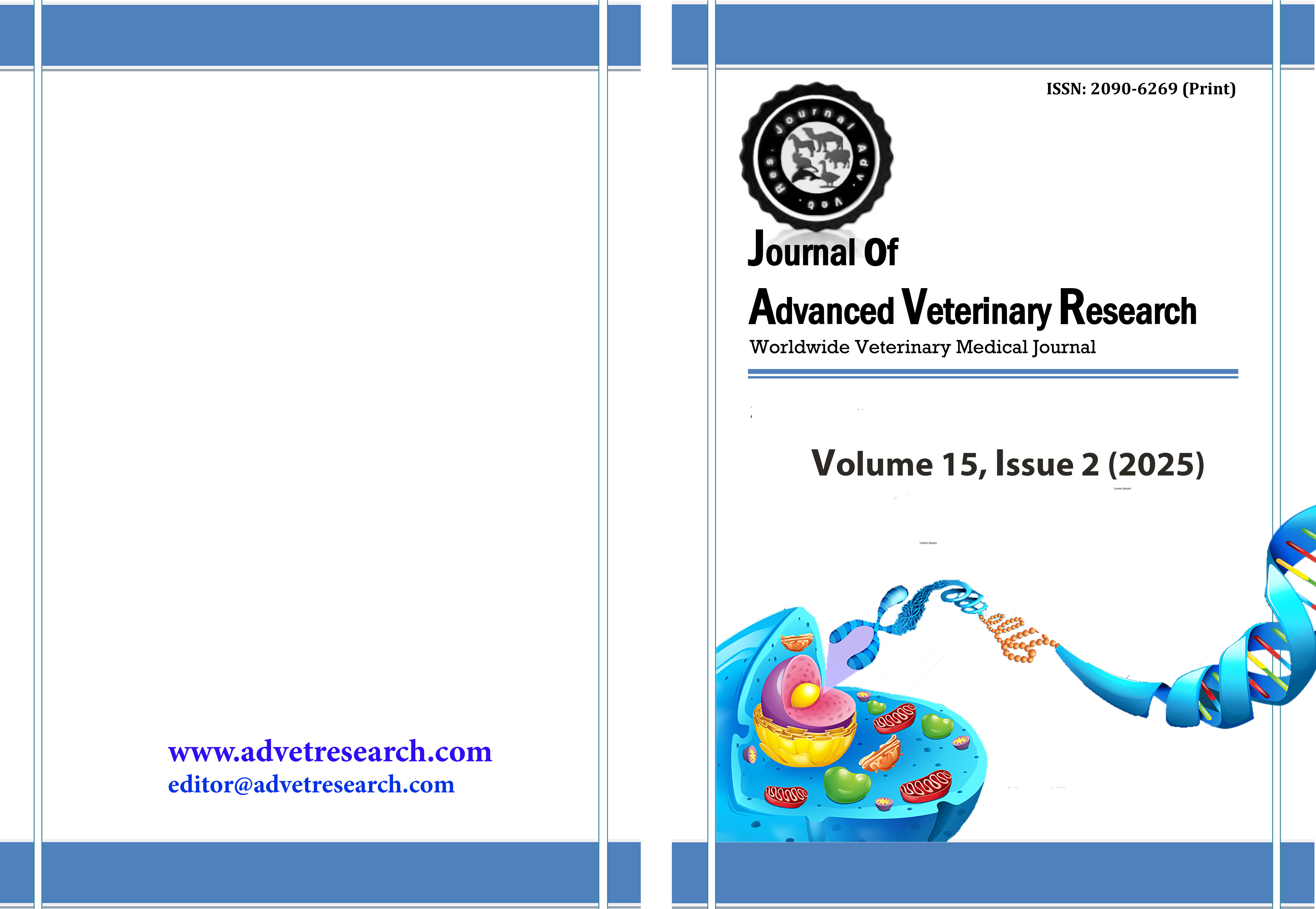First molecular characterization of Columbid herpesvirus-1 isolated from pigeons in Egypt
Keywords:
Pigeon herpesvirus, CoHV-1, respiratory signs, nervous signs, EgyptAbstract
Columbid herpesvirus-1 (CoHV-1) is one of the most frequent pigeon diseases reported worldwide. It is associated with respiratory and nervous manifestations in pigeons and necrotic lesions in their livers. It may cause sudden death, especially in young and immunosuppressed pigeons, and thus, this study aimed to demonstrate the occurrence and genetic characterization of CoHV-1 in Egypt. In this study, forty-four cloacal swabs and tissue samples were collected from Qena governorate, South Egypt. These samples were screened for CoHV1 by conventional polymerase chain reaction-based assay (PCR). The PCR results revealed the presence of herpesvirus DNA in Sixteen pigeons’ samples. The liver and spleen formalin-fixed tissue samples proved the presence of eosinophilic intranuclear inclusion bodies by histopathological examinations. Four samples were selected for Sanger sequencing for virus characterization. Nucleotide sequencing of the DNA-dependent DNA polymerase gene showed a high similarity with Columbid herpesvirus-1 strains from China, Thailand, and Turkey and with Falconid herpesvirus from the USA. This characterization of CoHV-1 isolates from South Egypt helped in giving informative data about their genetic relationships with global strains and decreased the research gap in studying pigeon diseases in Egypt and worldwide.
Downloads
Published
How to Cite
Issue
Section
License
Copyright (c) 2025 Journal of Advanced Veterinary Research

This work is licensed under a Creative Commons Attribution-NonCommercial-NoDerivatives 4.0 International License.
Users have the right to read, download, copy, distribute, print, search, or link to the full texts of articles under the following conditions: Creative Commons Attribution-NonCommercial-NoDerivatives 4.0 International (CC BY-NC-ND 4.0).
Attribution-NonCommercial-NoDerivs
CC BY-NC-ND
This work is licensed under a Creative Commons Attribution-NonCommercial-NoDerivatives 4.0 International (CC BY-NC-ND 4.0) license




